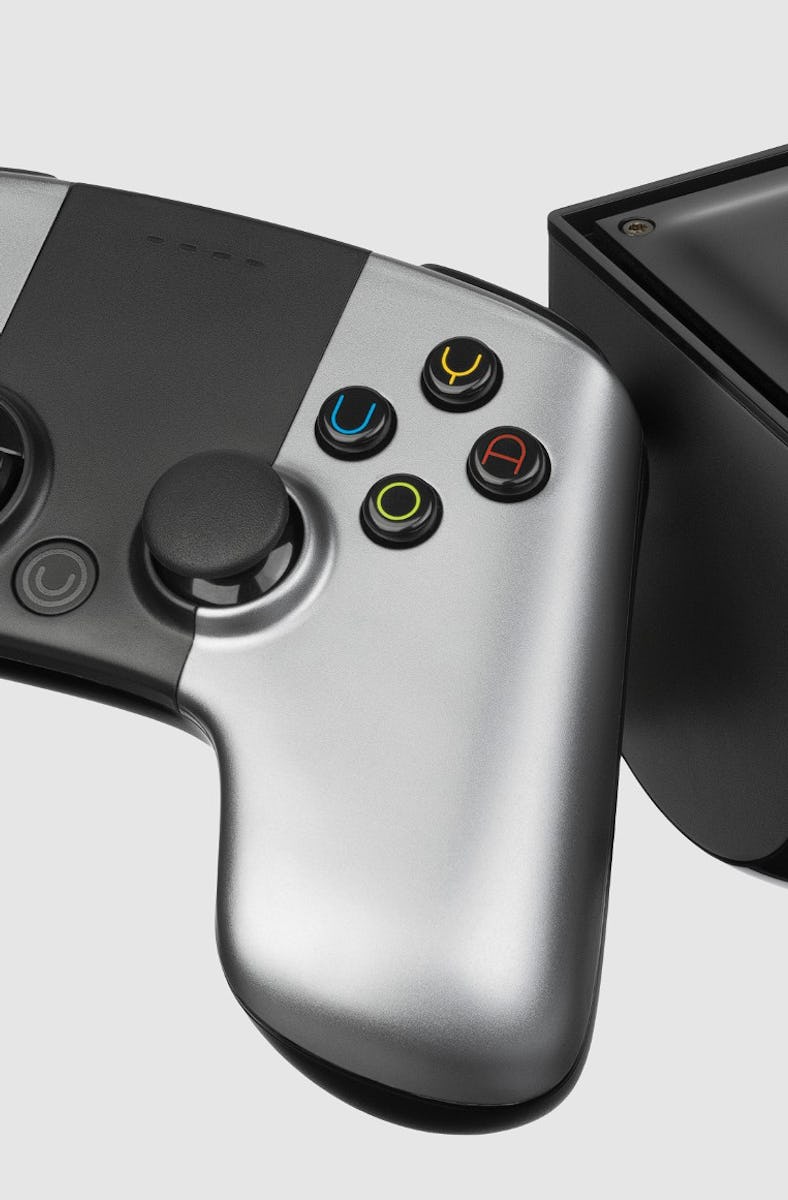10 Years Ago, a Daring New Console Paved the Way for a Gaming Revolution
The little console with a big dream.

PlayStation, Xbox, or Nintendo. For most of gaming’s lifespan, console gamers have only had these three options. Sure, Sega was in the race for some time, but when most companies try to elbow their way into the hardware space, they rarely succeed. So was the case with an independent console launched 10 years ago before falling into obscurity. Despite lofty ambitions, its failure highlights one of gaming’s persistent problems — the console wars.
Originally announced in July 2012, Ouya was the brainchild of Julie Uhrman. It was to be an independent console, priced at an attractive $99 and built on a modified version of Android with a catalog of games focused on casual and indie experiences. The tiny square box was full of potential, and Kickstarter for the project earned $8.5 million (almost 10 times more than the original fundraising goal).
The most significant promise of the Ouya was its disruption of the console market. It provided an alternative to the big three console makers, with a lower entry fee and a more eclectic catalog of games. Ouya imagined an alternative to what the industry had decided for fans. “And so begins the revolution” read taglines for the console. It launched on June 25, 2013.
History would quickly rain on Ouya’s parade. Tech company Razer purchased the company in April 2015. Within three months, Ouya hardware was officially discontinued on July 27, 2015. The core software was incorporated into Razer’s own products, like its Forge TV.
But wait, it gets worse. Razer discontinued the Forge TV in 2016. Then in 2019, in case it wasn’t already obvious, Razer announced that all Ouya services would be shut down permanently.
Ouya was dead. But the revolution was not.
Even though Ouya’s lofty promises never actually disrupted much of anything for mainstream console companies, its initial success proved there was a niche market for alternative gaming hardware and software. While Sony, Microsoft, and Nintendo have continued to release their consoles, the indie gaming space has picked up the torch of the Ouya. One of its biggest successors is the Playdate.
A tiny yellow handheld with a crank, the Playdate is an independent console released in 2022 dedicated to small and experimental games outside of the mainstream. While it may not be for the average gamer, the sheer creativity with which indie developers have used Playdate’s unique hardware speaks to the same goal as Ouya: give small developers a place to make inventive titles for a new type of hardware.
The Playdate continues the dream of Ouya.
Like Ouya, which allowed every unit to be a development kit, Playdate has open software that encourages developers to freely tinker so they can deliver unique experiences only available on Playdate. While Sony and Microsoft go to court over exclusives, Playdate has found a niche for its own exclusives that draw in a small but extremely dedicated following.
Similarly, one of the biggest hardware released in the past five years owes its success to Ouya. The Steam Deck, Valve’s own handheld PC gaming device, attempts to live outside of the traditional hardware space, offering players a new way to game. While the Steam Deck is a lot more expensive than the Ouya, it’s built on the same foundation of experimentation.
A decade after Ouya’s launch, its footprint on gaming can be felt now more than ever. The dream of a new approach to consoles, driven by developers making small creative titles, laid the foundation for a more open hardware space that now includes indie offerings like the Playdate and massive disruptors like the Steam Deck. With the Ouya, the revolution did begin.